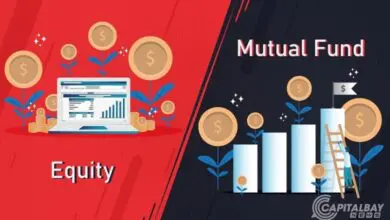Gold Prices Breaches $4,000 as Global Instability Fuels Unprecedented Rally

- Gold futures surpassed $4,000 per ounce on Tuesday, October 7, 2025, marking an unprecedented all-time high.
- The rally is driven by a confluence of geopolitical instability, U.S. government shutdown anxiety, and expectations for further Federal Reserve interest rate cuts.
- The surge highlights gold’s shift from a simple inflation hedge to a primary safe-haven alternative to the U.S. dollar amid global sovereign risk concerns.
The gold prices has reached an unprecedented peak. On Tuesday, October 7, 2025, the value of gold futures rose to over 4,000 per troy ounce, the first time ever in history.
The milestone represents the culmination of an aggressive, multi-year rally. This year alone, the yellow metal has climbed nearly 50%, putting it on track for its strongest annual performance since 1979.
The Perfect Storm of Drivers for Gold Prices
Market analysts credit the rally to a perfect storm of macro-economic and geopolitical events combining to fuel the demand of safe-haven assets (Reported by The Economic Times). The immediate trigger was the ongoing U.S. government shutdown that had entered into the second week.
The stalemate on the budget has paralyzed Washington, halting the release of major economic information and further creating uncertainties in the global economic market. This mess has strengthened the attractiveness of gold as a safe investment when the mainstream markets are stormy according to Reuters.
Monetary Policy and Fears of Geopolitics
In addition to the U.S. domestic anxieties, the rally is supported by two structural forces. First are anticipations of the U.S. Federal Reserve relaxation. The market is widely pricing in two additional 25-basis-point rate cuts before the end of the year.
This helps the gold which is a non-yielding asset because lower interest rates reduces the opportunity cost of holding it compared to other interest bearing investments such as bonds.
Second, institutional buying is still being fuelled by persistent geopolitical instability.
A Flight from the Dollar
Although gold traditionally is regarded as the anti-inflationary and crisis currency, the fact that it has been breached to the tune of $4,000 has a more specific meaning: it is the manifestation of an increasingly diminished trust in the U.S. dollar as a safe-havens asset.
Joe Cavatoni, the chief market strategist at the World Gold Council, said that a large percentage of the rally is because investors are actively seeking alternatives to the U.S dollar and abandoning U.S sovereign risk, reported by The Washington Post.
Central banks around the world are leading this trend which is sometimes known as de-dollarization when applied in a portfolio setting.
The Retail Demand and Central Banks
The central banks are played an important structural role. China, India, and Turkey are among the nations which have been piling gold at high rates over the past months because of its perceived protection against financial instability, trade embargo and currency risk.
In China, the central bank, on its part, has been on a streak of gold purchases and this is an eleventh month of buying spree.
At the same time, retail investors are buying billions of gold-based Exchange-Traded Funds (ETFs). This de-risking and retail-based surge of interest combined at the sovereign level has given the pricing increase a huge bedrock, with institutional and retail investors all generating what market analysts term the next leg of the price surge (Reported by Seeking Alpha).
Outlook and Caution
In the long-run, it seems that the bullish momentum is strong. Price targets have been raised by analysts of the large financial institutions. One such case is Goldman Sachs which has projected a high forecast of 4,900 per ounce by December 2026.
Caution is due, however, to some degree. Some analysts note that gold is already extremely overbought in the daily charts, meaning that the metal is likely to face a short-term pullback or profit taking after failing to achieve its next big leg up.
The market will be looking out to any solution to the U.S. government shutdown or a change in the Federal Reserves tone either of which can alleviate the existing safe-haven demand.



